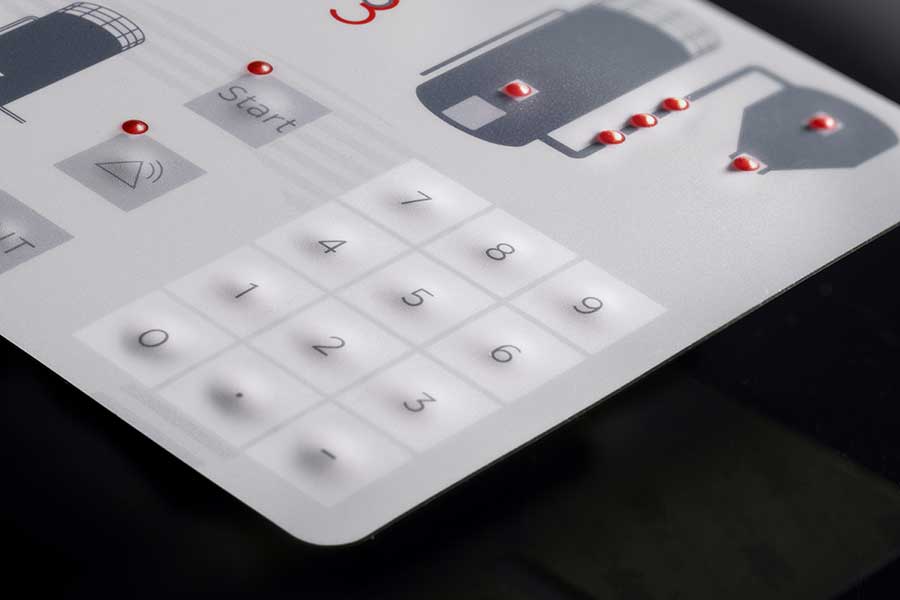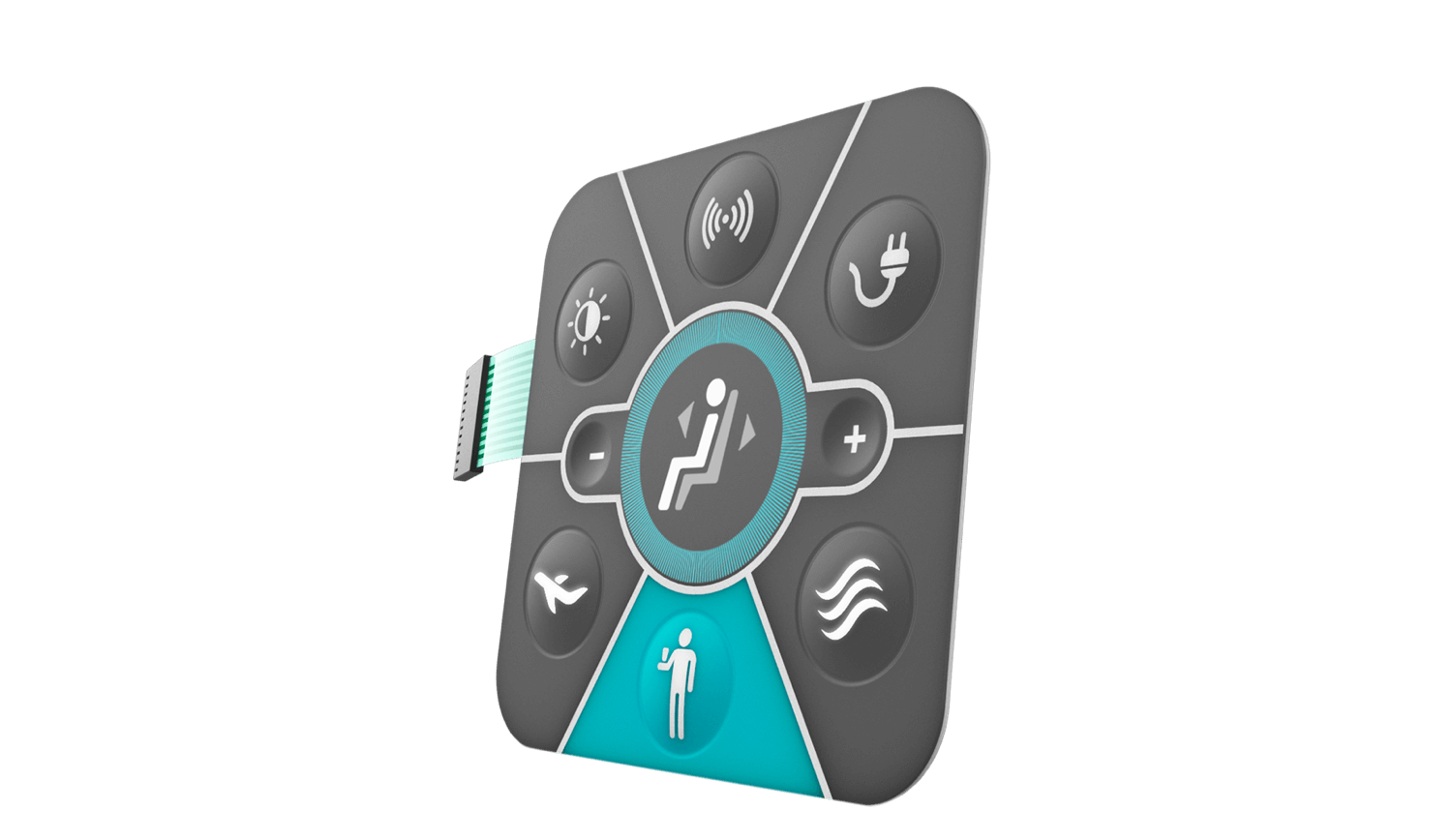Exactly How a Membrane Switch Enhances Customer Experience and Tool Performance
Exactly How a Membrane Switch Enhances Customer Experience and Tool Performance
Blog Article
Just How Membrane Switches Over Contribute to the Longevity of Electronic Control Panels
Membrane layer buttons play a crucial duty in improving the toughness of electronic control panels, mostly via their multi-layered building and construction which supplies effective defense versus ecological factors such as wetness and dust. The lack of moving parts significantly minimizes the probability of mechanical failures, making membrane changes ideal for requiring applications.
Meaning of Membrane Layer Switches

Membrane layer switches are developed to be thin and light-weight, making them suitable for applications where area is limited. They can be produced in numerous forms, dimensions, and shades, offering versatility in layout that meets aesthetic and functional requirements. Furthermore, membrane switches can integrate different innovations, such as responsive comments and LED indications, boosting customer experience.
As a result of their building, membrane switches are commonly immune to dirt, dampness, and basic wear, adding to their sturdiness in requiring atmospheres. Their seamless style not only promotes simple cleaning but also minimizes the threat of mechanical failing, making them a recommended selection for makers looking for trustworthy individual interfaces in their electronic control board.
Defense Versus Environmental Elements
The design of membrane changes inherently provides a level of security against different ecological elements, which is important for maintaining capability in difficult conditions - Membrane Switch. These buttons are typically created with layers of adaptable materials that secure interior components from moisture, dirt, and impurities. By encapsulating the wiring, membrane switches decrease the danger of short circuits and deterioration, which can substantially impair performance
Furthermore, using durable adhesives and sealants during manufacturing enhances their resistance to environmental challenges. Membrane layer switches can sustain exposure to chemicals and solvents, making them appropriate for industries such as food handling and medical care, where health and cleanliness are vital. Their seamless surface area layout likewise protects against the buildup of dirt and bacteria, promoting simpler cleansing and maintenance.
Temperature level fluctuations are an additional environmental problem, and membrane buttons are engineered to work properly across a vast range of temperature levels (Membrane Switch). This flexibility guarantees that control board remain functional in numerous settings, from industrial settings to customer electronics
Influence on User Interaction
Customer communication with electronic control board is dramatically influenced by the style and functionality of membrane buttons. These buttons give a tactile interface that boosts the overall user experience, enabling for instinctive navigating and control. Their receptive discover this info here nature guarantees that individuals get prompt responses upon activation, which is essential for jobs calling for accuracy and performance.
In addition, check out here the smooth surface of membrane layer changes facilitates very easy cleaning and maintenance, advertising user confidence in the reliability of the interface. This cleanliness is particularly important in atmospheres where hygiene is paramount, such as clinical or food processing settings. Furthermore, the portable and lightweight layout of membrane layer changes adds to the aesthetic allure of control board, encouraging individual interaction through a modern and sleek appearance.
Furthermore, the integration of aesthetic components, such as published icons and backlighting, helps customers promptly recognize functions, decreasing the learning contour connected with new equipment. Because of this, customers can operate devices better, causing enhanced productivity and satisfaction. In recap, membrane buttons play an essential function in enhancing customer interaction by incorporating capability, aesthetic appeals, and simplicity of usage, ultimately bring about enhanced operational performance.
Style Adaptability and Personalization
Design adaptability and customization are vital elements of membrane layer switches, making it possible for producers to customize electronic control board to particular applications and customer requirements. This flexibility enables the assimilation of numerous style components, such as colors, graphics, and structures, which can boost the visual charm and individual engagement of the control panel.
Membrane switches can be personalized in dimension and form, fitting a large range of devices and applications, from industrial equipment to customer electronics. This adaptability ensures that makers can develop user-friendly user interfaces that line up with customer expectations and operational demands. Furthermore, the capacity to include one-of-a-kind functions such as backlighting or tactile feedback Click Here additionally boosts use, enabling a much more interactive experience.
In addition, the production procedure for membrane switches sustains the rapid prototyping of styles, allowing makers to repeat and fine-tune their ideas promptly. This ability not just increases the development timeline but additionally makes certain that the last item fulfills particular useful and visual requirements.

Cost-Effectiveness and Longevity
Cost-effectiveness and longevity are significant advantages of membrane buttons, making them an eye-catching alternative for producers and end-users alike. These switches are commonly cheaper to create than conventional mechanical switches, mostly because of their simplified production processes and the decreased number of elements required. This price benefit prolongs not only to first production but additionally to long-lasting operational expenditures, as membrane layer switches frequently need less upkeep and have a lower failure rate.
Furthermore, the durability of membrane layer changes contributes to their total value. Created from sturdy products, they are immune to environmental variables such as wetness, dirt, and chemicals, which can cause early wear in other button types. The lack of relocating parts minimizes mechanical failing, enabling membrane changes to maintain performance over expanded periods.
This toughness is especially advantageous in applications calling for consistent efficiency under requiring conditions, such as medical tools and industrial devices. Ultimately, the combination of cost-effectiveness and long life makes membrane changes an economically sensible choice for makers, providing reputable remedies that endure the examination of time while maximizing financial factors to consider.
Final Thought
In verdict, membrane buttons dramatically boost the durability of digital control panels via their durable building and construction and safety functions - Membrane Switch. In general, membrane switches stand for a trustworthy and cost-effective selection for boosting the durability and functionality of digital control systems.
Report this page